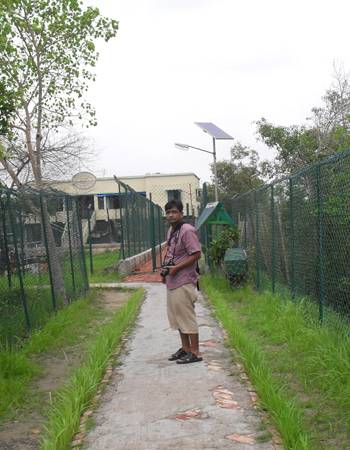Krishnendu Mukherjee
Wind Under The Wings Award (2013)
Krishnendu Mukherjee Gnatola ma no kpon sia, eyenabe adelan to kpo mi sena. – Ewe-mina
(Until the lion has his or her own storyteller, the hunter will always have the best part of the story). – An African proverb: The Ewe-mina are one of the major ethnic groups of Benin, Ghana and Togo.
Environmental writers are vital to our task of placing nature conservation in the right perspective. They give voice to wild India and down the years Sanctuary has honoured both reporters and the papers or TV channels for which they work for helping us reach out to the public. Times of India reporter Krishnendu Mukherjee is one of those persistent journalists whose voice has come to be recognised and trusted in eastern India. Based in West Bengal, he unfailingly draws connections between the enjoined issues of climate change, biodiversity and ecosystem loss. Supported by his editors, he has become one of India’s most dependable sources of information on wild India. His investigative stories and reportage on initiatives such as the first-ever camera trapping exercise on the tigers of the Sundarbans exposed the truth about tigers in a geography that continues to be infamously difficult to access. His unbiased reporting on the battle in Buxa between the National Tiger Conservation Authority (NTCA), which claimed that there is no photographic evidence for tigers in the reserve, and wildlifers who say that there are 19 tigers and ask that a vital relocation programme for villagers continue, has garnered a lot of attention.
His articles on the lives and challenges of fishermen in the Sundarbans explored facets of the community that threw light on nuances of people-park relationships crucial to the future of the tiger. He was also the first to investigate the story of a melanistic leopard cat in the Sundarbans and the presence of melanistic barking deer in the Senchal Wildlife Sanctuary. His writings on the Santragachi Wetland of Howrah district helped draw attention to the need to protect this vital migratory bird habitat and his hard-hitting reportage on the controversial Sikkim-Rongpo broad-gauge railway track forced the National Board for Wildlife (NBWL) to pay attention to an issue that might otherwise have been overlooked. What makes Mukherjee stand out above all else is that his loyalty lies squarely with the truth. Without let, hindrance or favour, he reports on issues without worrying about who is implicated, or damaged. One such report underscored the fact that central protection funds were being spent on setting up inappropriate concrete structures right in the core area of the Sundarbans, and compelling the NTCA to intervene and take corrective action.
His concern extends beyond the perimeter of ‘wildlife’ stories. He has written incisive pieces on climate change, the diversion of wildlife habitats for commercial projects and on the threat of genetic swamping of endangered species. Known to take a hard line in favour of truthful environmental reporting, he has the support and the trust of his management at the Times of India, a very encouraging achievement in an age when the independence of the media is threatened from the inside and the outside.
For this, we honour him.


